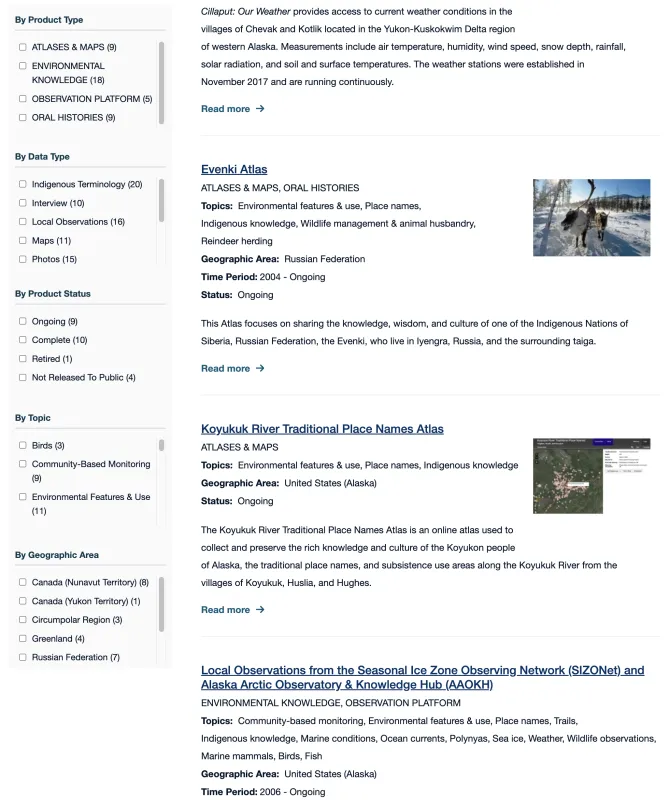By Agnieszka Gautier
An exciting new addition has arrived to the NSIDC.org website, allowing users to better explore community-based observations of the Arctic. An NSIDC program called the Exchange for Local Observations and Knowledge of the Arctic (ELOKA) has changed its URL to eloka.nsidc.org, and in doing so, becomes embedded into the NSIDC website infrastructure. Visitors to the old eloka-arctic.org address will be automatically redirected to the new location.
This website's move also comes with several enhancements, including a more secure access location for ELOKA and partner data products, some of which have sensitive user restrictions, as well as improved accessibility standards. The move will transfer the website to a customizable format called a microsite, which emphasizes the partnership between ELOKA and NSIDC, while still providing ELOKA with the autonomy it needs to work with a broad range of community members, researchers, and educators.
“No one on the NSIDC web team had created a microsite within our main site before, so it was a process,” said NSIDC’s senior user engagement specialist Leslie Goldman, who coordinated the move. “We knew it could be done, we just needed to figure out how.”
A site within a site
The ELOKA microsite has its own look and feel while maintaining NSIDC’s familiar navigation. In moving the site, the web team had the opportunity to improve on several features. “The main thing we did was reorganize the content to better align with what ELOKA is,” Goldman said. “The home page is really meant to tell the story of ELOKA, what makes them unique and special.”
For that reason, the main navigation tabs were simplified and, in some cases, renamed. For instance, publications, reports, and news all moved under the “Our Work” tab. And the first page under “Our Work” is “Our Approach,” so that people new to ELOKA can quickly and easily become better acquainted with what ELOKA does to support Arctic communities and strengthen their data sovereignty.
The biggest change on the main navigation involved the renaming of the “Products” tab to the “Knowledge Sharing Products” tab. The ELOKA team felt this new name better defined what ELOKA means by “products.” It also better represented ELOKA’s role as a facilitator between resident Arctic experts and visiting researchers.
Other benefits
“We also wanted to offer a better user experience,” Goldman said. So, the “Knowledge Sharing Products” page has an improved filtering system for users to better find products that interest them. A “type of product” filter was added to better categorize the products. “That was just another opportunity to break out content, so it was easier for partners to find their content. But it also breaks down the products in way that makes sense for people who might not know what ELOKA is,” Goldman said. For instance, if someone is only interested in the Atlases, then he or she can click on that option and immediately see a list of Atlases rather than having to scroll through the catalogue.
ELOKA’s site contains partners subsites that contain archived material. “Those too got a new look and feel,” Goldman said. By having its own site within the NSIDC framework, ELOKA better represents their partners. “It allows ELOKA and their partners to have their independent look and feel, while also portraying them as a part of NSIDC and allowing the ELOKA program to be more cost effective, so that ELOKA can focus better on their impactful work like community building,” Goldman said.

